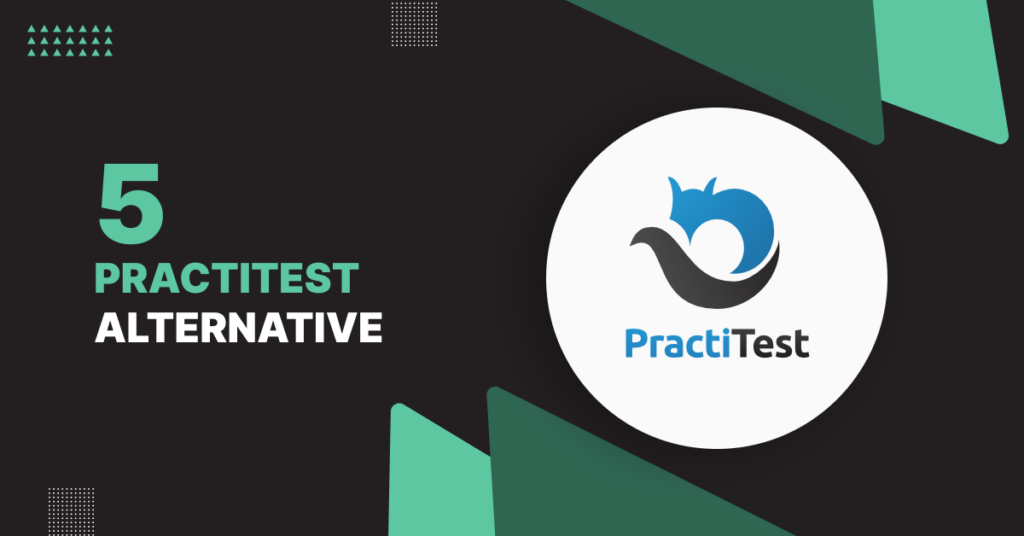PractiTest
PractiTest is a SaaS-based end-to-end test case management platform that covers the entire quality assurance process. It supports requirement documentation, requirement mapping to test cases, the ability to create/run/edit test cases, log defects within the platform, and integrate it into a defect management system, Finally, it provides better visibility and control through all of these interactions via beautiful reports and dashboards that can be easily shared within teams.
PractiTest includes a number of tools, features, plugins, and integrations.
PractiTest – Fundamentals
- A platform for end-to-end test management: Bring your QA staff together in one area. Visualize your data to gain insightful, helpful information. Work together with all teams to achieve business objectives.
- Connect teams, bridge silos, unify communication, and enable a single source of truth across your organization with a centralized QA hub. Increase the productivity, visibility, team collaboration, and business alignment of your testing.
- Complete visibility: PractiTest’s powerful reports, real-time customizable dashboards, and dynamic filter views provide a high-level overview or drilled-down details of your QA process. Use testing insights to anticipate potential issues, make data-driven decisions, and expedite work.
- Increased productivity: You can easily reuse testing components with ease, and you can dynamically filter your data to meet your needs.
- Eliminate tedious work so your team can concentrate on what matters while increasing productivity.
- Flexibility: PractiTest has all the tools you need to go your own way, including fields, dashboards, and views that are all customizable, as well as integrations with all the tools you already use.
- Regardless of the testing methodology you use—Waterfall, Agile, or DevOps—customize PractiTest to suit your QA operation best.
- Align your testing operation with business goals by achieving full traceability of all testing assets back to user stories. Improve the allocation of testing resources for increased efficiency and faster product delivery.
PractiTest Alternatives
It’s crucial that we stay current with new tools and technologies as software testers. Although PractiTest has long been a well-liked test management tool, there are some excellent alternatives. The top 5 alternatives to PractiTest include Testpad, Testrail, QA Touch, Qucate, and TestCollab. Choose the top PractiTest rival that satisfies your particular business needs to empower your team.
Why Alternatives
PractiTest takes some time to get used to all the features and functions, despite being friendly and intuitive. Teams with limited resources may need help to train and onboard new users in order for them to become proficient users of the tool. Since PractiTest allows for the integration of automated tools, an internal engine for automated testing would be ideal.. Instead of making test management tasks easier to complete, PractiTest’s user interface (UI) with filters and tags makes everything tedious. They are concentrating on features like the Kanban board and reporting rather than enhancing the already-existing ones.
5 Best PractiTest Alternatives
1. QA Touch
Scalable product QA Touch supports testing teams of all sizes and needs. With its simple features for creating test cases, bundling test suites, running tests, integrating third-party tools, and producing flawless test reports, QA Touch offers an affordable test solution. It also has built-in bug-tracking, requirements, mind maps, boards, and performance, and allows users to manage their testing operations from a single interface (dashboard). The numerous user-friendly features, which cover everything from mapping and developing test cases to monitoring team activity, are available for users to use.
QA Touch wins PractiTest
- Effective test management involves managing projects, releases, test cases, and issues in a single repository in the most organized manner.
- Using the QA Touch integrated enterprise defect module, log, categorize, and track down each bug from its occurrence until it is fixed.
- Get a general overview as well as a project-specific overview of the testing progress in terms of test cases, runs, issues, and user activity logs with the help of seamless dashboards.
- Set project-based and feature-based visibility levels for team members with custom roles specific to the organization.
- Requirements Traceability Matrix (RTM) – Requirements must be mapped with the appropriate test cases in order to be tracked.
- Issues Should Be Audio Recorded Instead of Typing-For efficient project collaboration, just voice record issues and speak in your native tongue.
- Analyze, organize, and improve your understanding of your project with the built-in mind map. Use QA Touch to create a detailed mindmap representation of your requirements and processes and share it with others.
- Your native language is supported by QA Touch’s multilingual capabilities. By translating your QA Touch platform into a language you are familiar with, you can make test management simpler.
2. TestPad:
Testpad is best for those looking for a straightforward test case management tool for manual and exploratory testing. Although it resembles a spreadsheet more than a database of test cases, it has features that make it simpler to use than a spreadsheet, including consistent formatting, easy team collaboration, and useful reports that outline how testing is going.
Testpad vs. Practitest
The following comparison of the test management tools PractiTest and Testpad will highlight the similarities and differences of the essential features that should be considered during your evaluation process.
- Testpad is conducive to a variety of testing approaches, such as traditional test cases with steps and anticipated results, but it also works well for guiding exploratory testing, the manual portion of agile testing, syntax highlighting BDD given/when/then, or just ad hoc testing where you write a straightforward list of things to check.
- Plans are organized into releases using drag-and-drop, and editing is keyboard-driven and powered by javascript. Reports are surprisingly useful; their result grids provide an excellent visual representation of how testing is going. Additionally, JIRA and other issue trackers can be easily integrated.
- Testpad is targeted at both beginners looking for an improvement over the annoying mess they’re in with spreadsheets and QA professionals looking for a more pragmatic/productive approach to testing.
3. TestRail
A test case management tool called TestRail aids us in planning, monitoring, and controlling our testing procedure. A one-month trial period is offered for the web-based test case management tool TestRail. Any website and desktop-based application can use this test management tool. One of the most user-friendly and manageable test suite features can be found in this test management software. Additionally, TestRail aids in maintaining testing history, making it simple to track the number of successful and unsuccessful tests.
Features that make Testrail better than PractiTest
- Utilize personalized to-do lists, filters, and email notifications to increase productivity. Track team workload to modify tasks and resources.
- With options for cloud-based or on-premise installation, TestRail is highly customizable. For larger teams, the new Enterprise edition includes features like SAML 2.0 Single Sign-On, audit logs, and priority support.
- TestRail can be integrated with a wide range of tools for test automation, including Ranorex Studio, Atlassian Jira, FogBugz, Bugzilla, Gemini, Axosoft, GitHub, and TFS.
4. Qucate
Qucate is a test management tool developed in the UK for testing and QA teams with the goal of minimizing setup time and accelerating the functional testing procedure. Qucate’s dynamic test plan templates change as you test, saving you time and enhancing the quality of your test coverage. Qucate promotes teamwork by offering conversation and tagging functionality, smart notifications, and intelligent workflow management for your testing, QA, and development teams.
Qucate over PractiTest
- You can recall the history of your test cases because of archive functionality, which prevents accidental deletion of your test cases.
- complete compliance, visibility, and transparency audits of test plans.
- Test cases that are dynamic and version-controlled offer a complete audit of your testing operations.
- It’s simple for you to manage your testing process thanks to the intuitive user interface.
5. TestCollab
The most cutting-edge test management tool for your QA requirements is called TestCollab. Over the last 11 years, hundreds of businesses have used TestCollab for their QA processes. Because of TestCollab’s user-friendly and intuitive interface, implementing your team is a breeze. Additionally, TestCollab provides in-app live chat support. It supports scheduling, integration with JIRA, scheduling, configurable test plans, custom fields, and agile methodology.
Features that make TestCollab the best Alternative to PractiTest
- Smooth Jira Integration – TestCollab allows you to post bugs in Jira and, with the help of their Jira plugin, to view all of your test cases, test plans, and reports in Jira.
- Multiple testers can be assigned tasks automatically, saving you from having to manually assign test cases to each tester.
- Use the same test case for multiple projects using reusable suites; when the test case is updated in one project, it is updated in all the projects.
- Modern features include in-app notifications and mention comments.
- API-first architecture for simple integration.
Finally
Despite having described the most well-known PractiTest alternatives, the list is not yet complete. Nevertheless, there are a number of additional test management options on the market. It is always advisable to choose a tool carefully based on the demands of your project. Before making your final choice, take the time to weigh the advantages of each of these services against one another. It’s crucial to take your time when searching for the ideal software and pick something that will accommodate both immediate needs and long-term objectives.







